Flashcards for NEET Biology are designed to boost your NEET preparation. Find below flashcards for Reproduction in Organisms. These flashcards on Reproduction in Organisms are prepared as per the NEET syllabus. This is helpful for aspirants of NEET and other exams during last-minute revision. Flashcards For NEET Biology – Reproduction in Organisms, covers all the important points that are frequently asked in the exam. Check BYJU’S for the full set of Flashcards and Study material for NEET Biology. Solve NEET Biology MCQs to check your understanding and outperform in the exam.

Download PDF of NEET Biology Flashcards for Reproduction in Organisms
| Name of the NEET sub-section | Topic | Flashcards helpful for |
| Biology | Reproduction in Organisms | NEET exams |
| Asexual reproduction | Single parent gives rise to offsprings
Morphologically and genetically identical offsprings |
| Clone | Produced by asexual reproduction
Exact copy, which is Morphologically and genetically identical |
| Asexual reproductive structures | Zoospores- Chlamydomonas
Conidia- Penicillium Buds- Hydra Gemmules- Sponge |
| Binary Fission | In unicellular organisms.
The cell divides to give rise to two individuals. E.g. Amoeba, Paramecium, bacteria, etc. |
| Budding | Buds are produced as an outgrowth due to unequal division, which separates from the parent cell giving rise to new organisms.
E.g. Yeast, Hydra, etc. |
| Encystation | Forming a hard cyst or capsule surrounding protoplasm under unfavourable condition.
E.g. Amoeba, etc. |
| Sporulation | Liberation of spores from encapsulated cysts under favourable conditions. |
| Vegetative propagules | Vegetative parts of the plants, which are capable of developing into offsprings |
| Vegetative propagules | Bulbils- Agave
Leaf buds- Bryophyllum Offset- Water hyacinth, Pistia Rhizome- Banana, Ginger |
| Terror of Bengal | Water hyacinth |
| Sexual reproduction | Fusion of male and female gametes |
| Strobilanthus kunthiana | Neelakuranji
Flower once in 12 years |
| Reproductive cycle | Cyclic changes during reproductive phase in female placental mammals.
Oestrous cycle – non-primates Menstrual cycle – primates |
| Gametogenesis | Formation of male and female gametes
Isogametes – morphologically similar gametes, e.g. Cladophora, etc. Heterogametes – Distinct egg and sperm, e.g. Fucus, Homo sapiens, etc. |
| Homothallic | Monoecious or bisexual
Having both male and female reproductive structures in a single organism. E.g. cucurbits, coconut, Chara, etc. |
| Heterothallic | Dioecious or unisexual
Male and female reproductive structures are present in different organisms. E.g. Papaya, date palm, Marchantia, etc. |
| Hermaphrodite | Both male and female reproductive structures are present in an organism.
E.g. sponge, earthworm, leech, tapeworm, etc. |
| Meiocyte | The diploid gamete mother cell
Undergoes meiosis to form haploid gametes |
| Parthenogenesis | Development of new individual from the female gamete without fertilisation.
E.g. honeybees, turkey, rotifers, some lizards, etc. |
| Embryogenesis | Development of embryo from a zygote by mitosis cell division and cell differentiation. |
| Oviparous | Egg laying animals, e.g. amphibians, reptiles, birds, etc. |
| Viviparous | Animals giving birth to young ones, e.g. most of the mammals. |
| Embryogenesis in flowering plants | Zygote – Embryo
Ovary – Fruit Ovule – Seed |
Get access to the full set of flashcards for NEET Biology, only at BYJU’S.
Also Check:
NEET Flashcards: Sexual Reproduction In Flowering Plants
NEET Flashcards: Human Reproduction
NEET Flashcards: Reproductive Health
NEET Flashcards: Principles Of Inheritance And Variation
NEET Flashcards: Molecular Basis Of Inheritance
Recommended video:

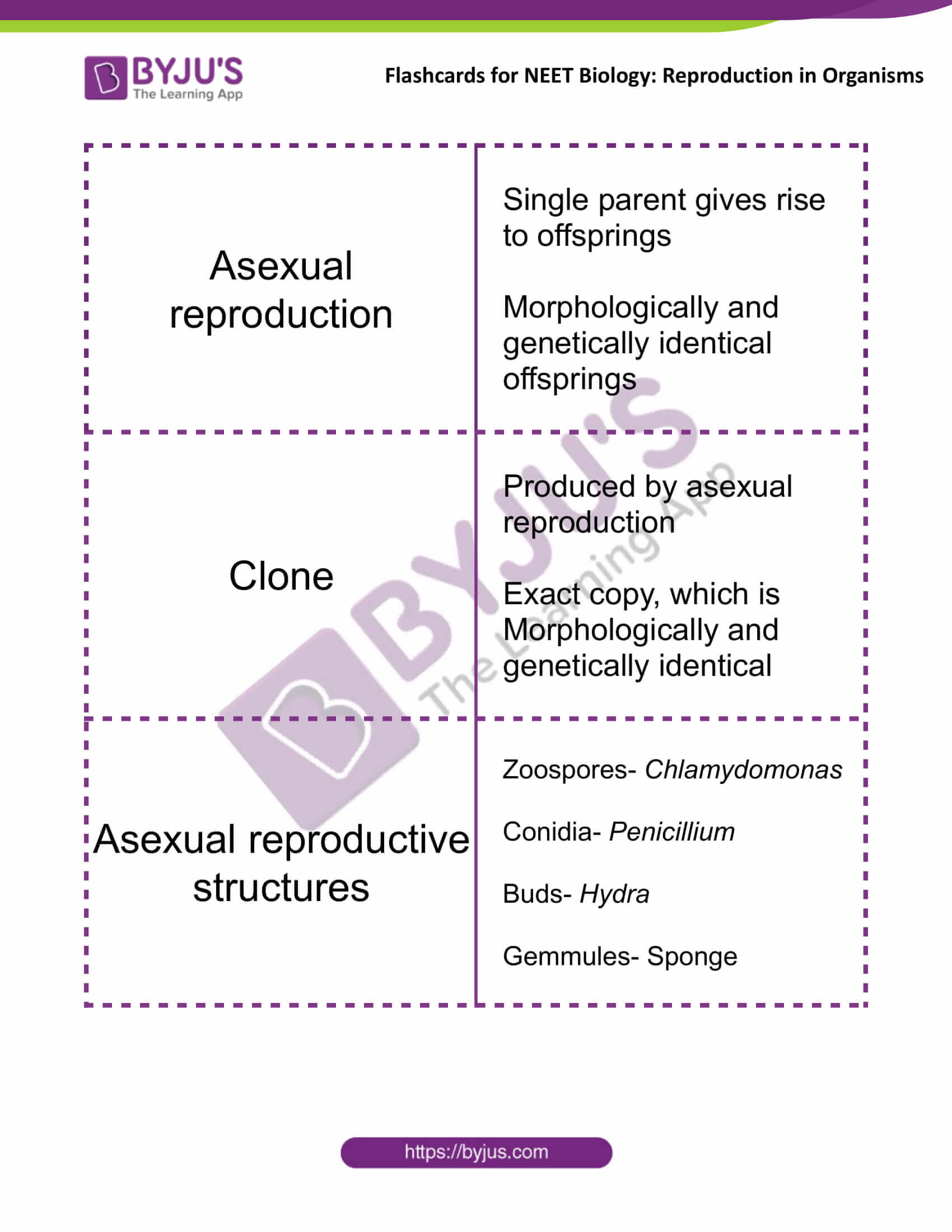
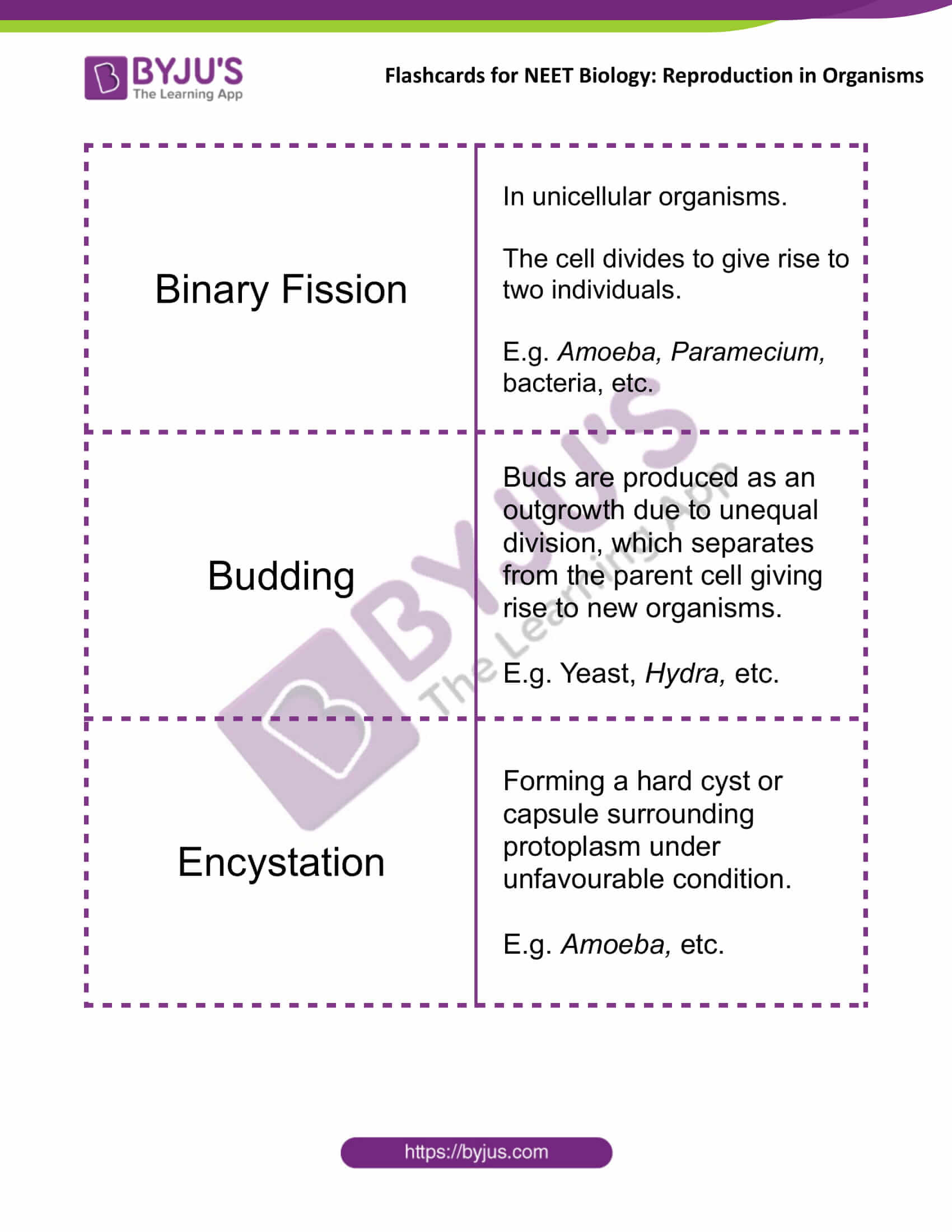
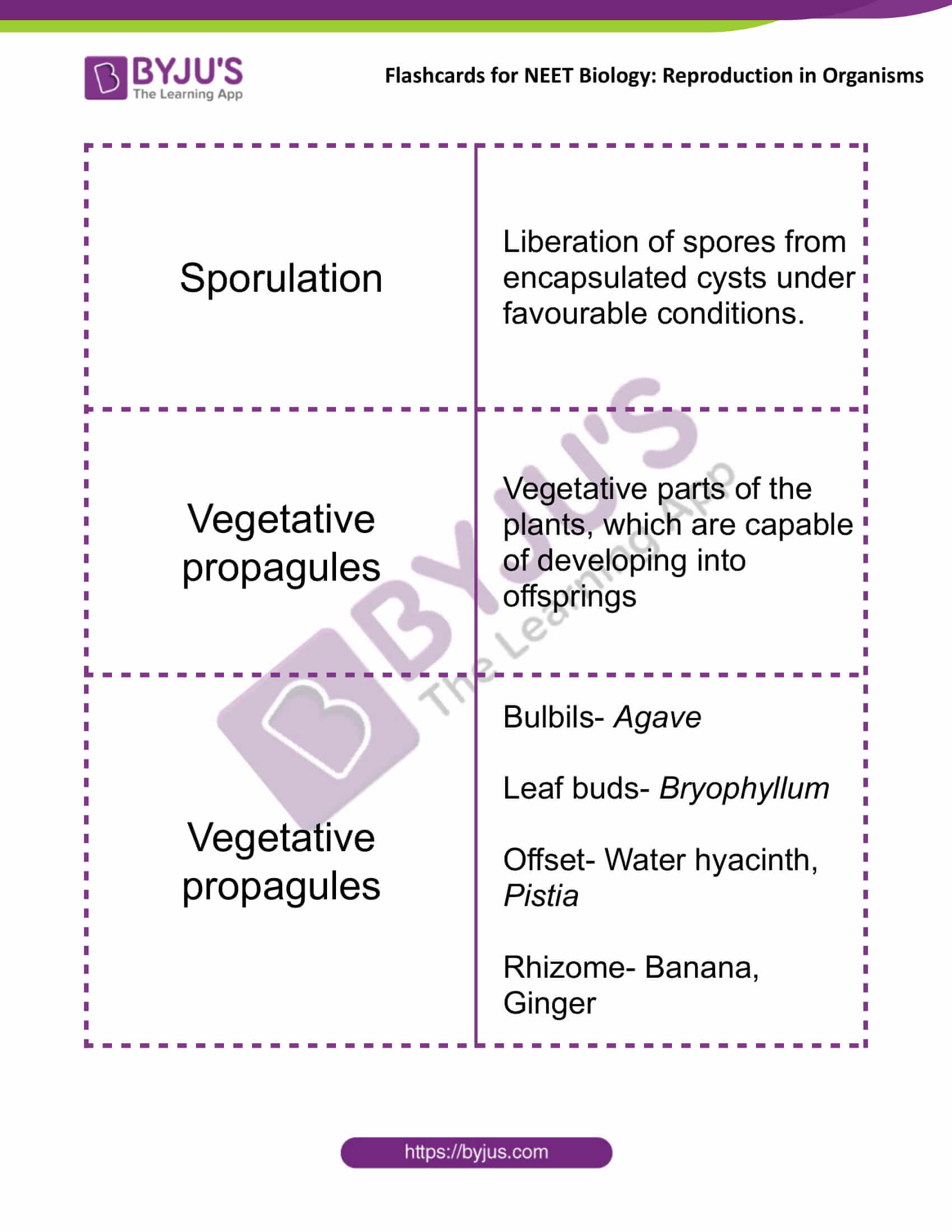
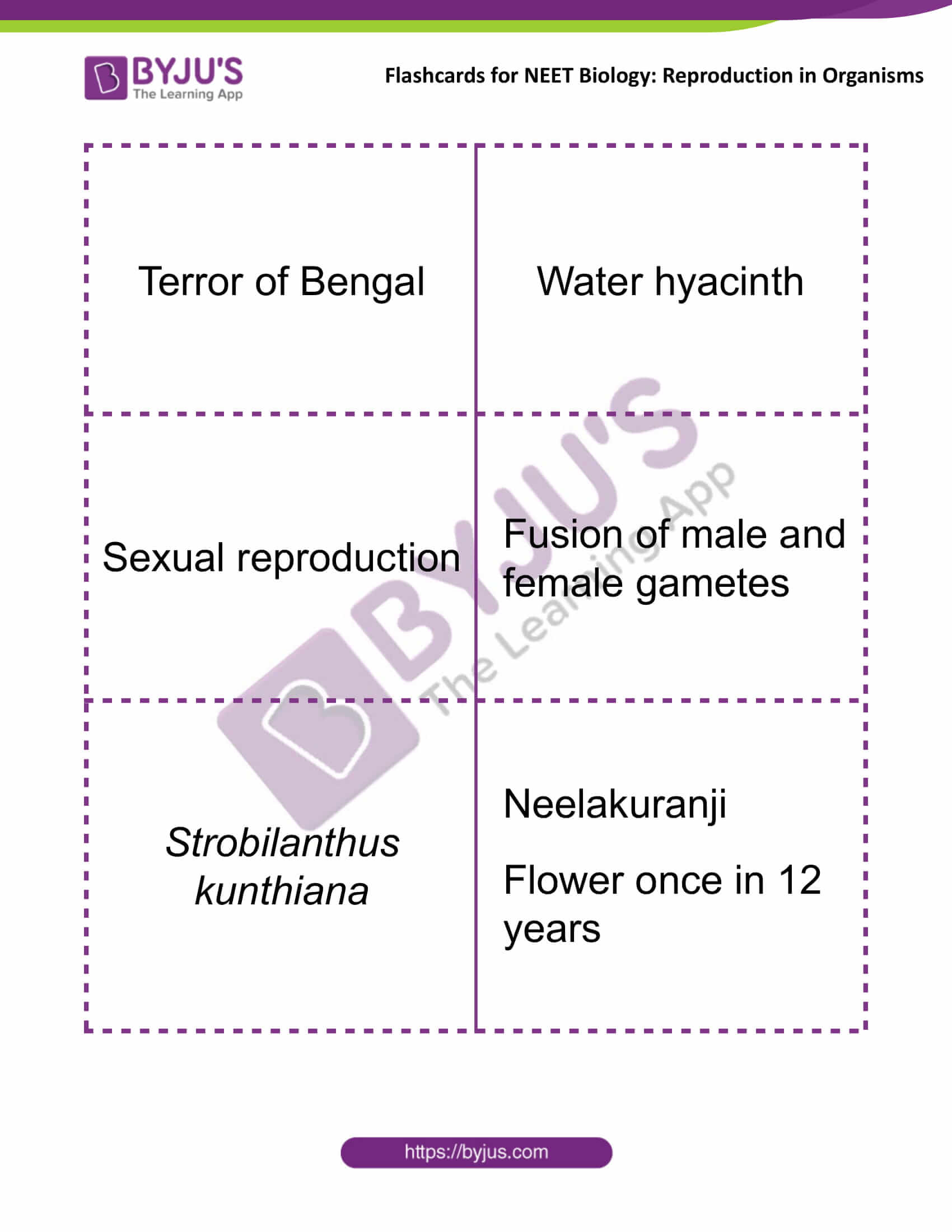
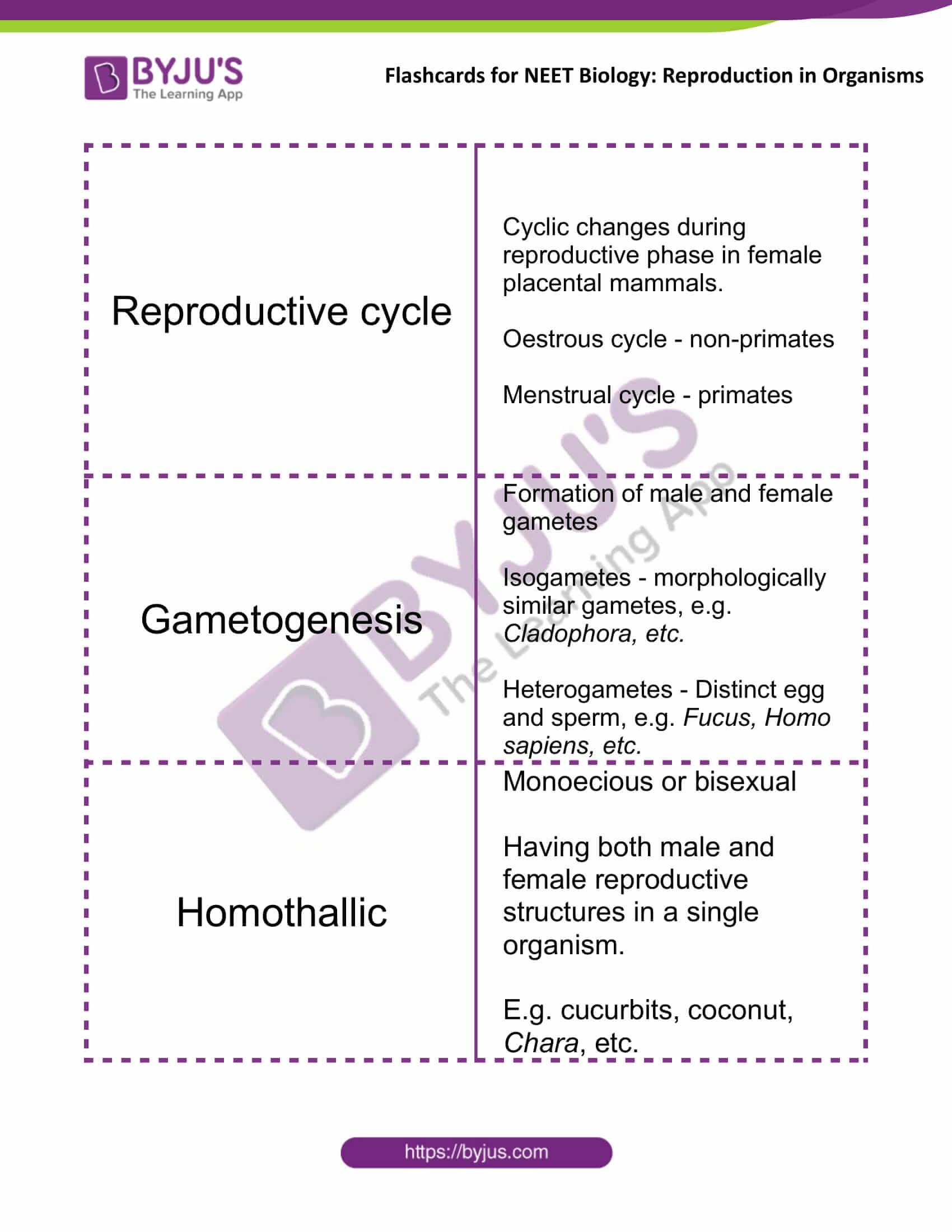
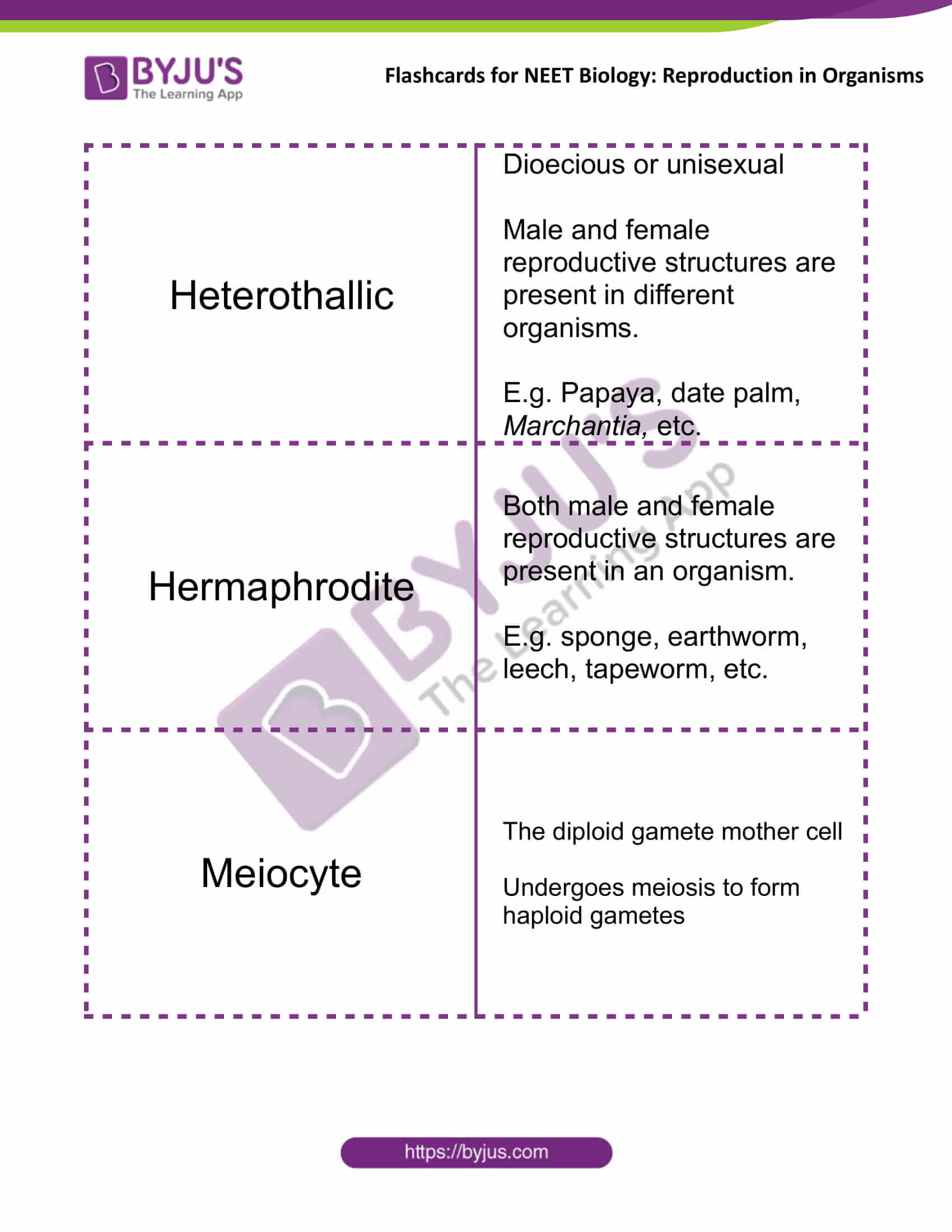
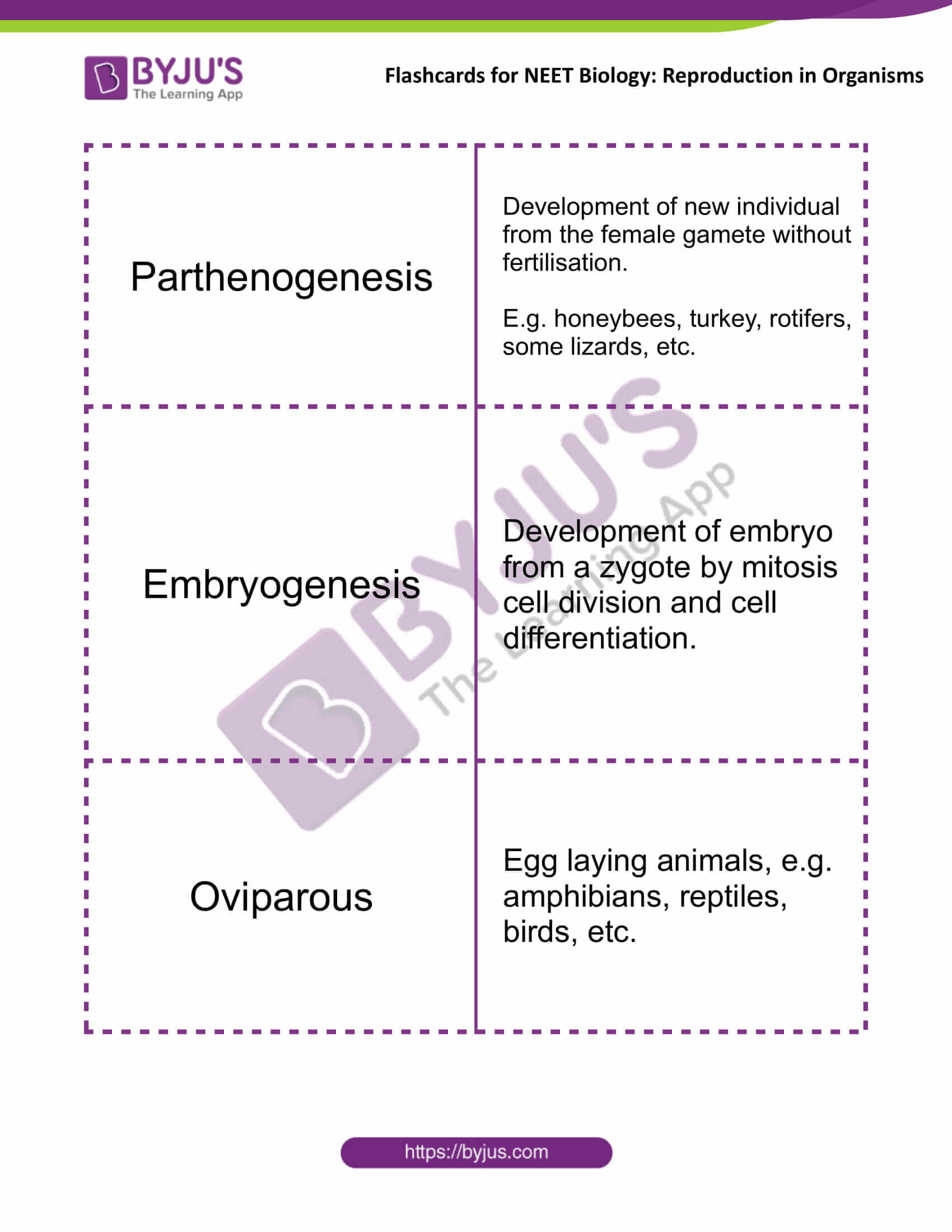
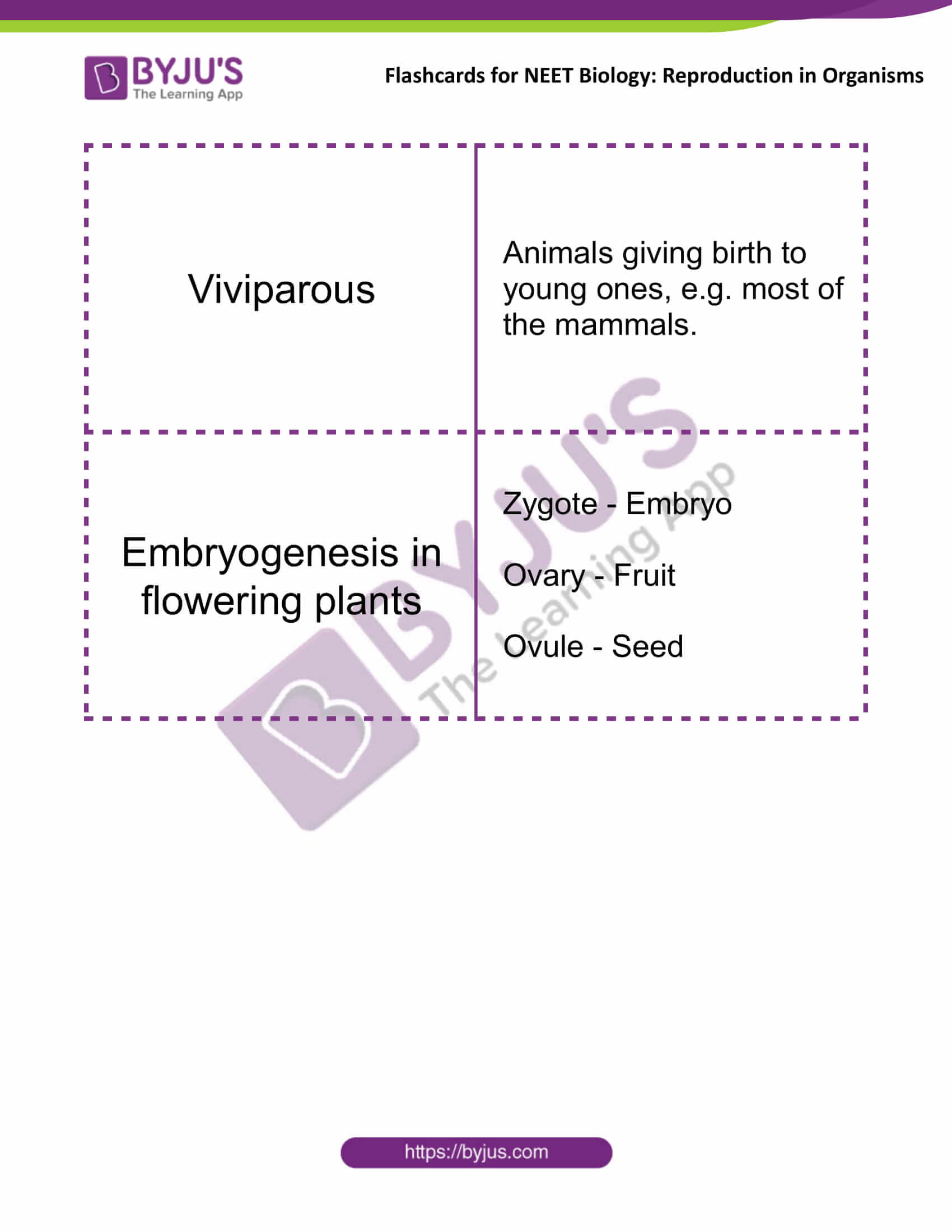
Comments